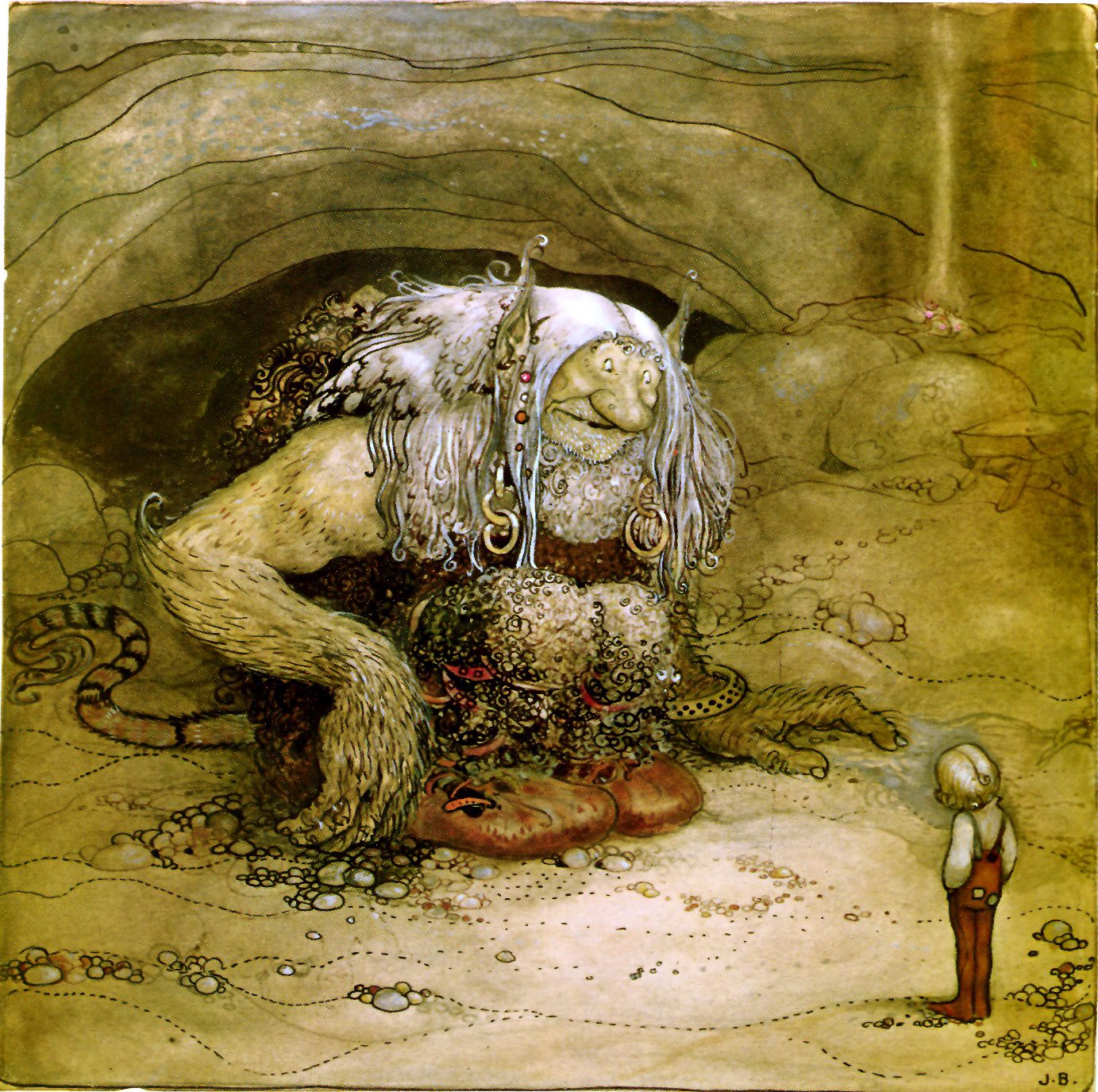essays
The Trolls in Our Midst: What Fairytales Can Tell Us about Online Behavior
In this month’s Geek Reads, Andrew Ervin looks at trolls in literature and in life

I’ve been reading lately about trolls, both the mythological monsters and those anonymous online ones who, per the Urban Dictionary, “purposely and deliberately (that purpose usually being self-amusement) starts an argument in a manner which attacks others on a forum without in any way listening to the arguments proposed by his peers.” Until recently, I had associated the current usage of “troll” with fairytales. The arrival on my desk of two bestiaries in particular, however, gave me a good excuse to reexamine what I knew — or thought I knew — about trolls and the way we use that word today.
In the 1840s, Peter Christen Asbjørnsen and Jøgen Moe collected a series of Norwegian folk tales, including the famous “Three Billy Goats Gruff.” In it, the smallest of the three goats is the first to attempt to cross a bridge guarded by a fierce troll. The goat implores the beast to wait for his big brother, who will make for a better feast. The middle sibling, of course, convinces the troll likewise. When the biggest of three goats reaches the bridge he knocks the troll into the water and the current carries away the creature, rendering the bridge safe forevermore. Here, a troll is an impediment to reaching greener pastures, whose greed causes it to pass up an easy meal in the hopes of a larger one. That does not, at first glance, immediately describe the kind of trolling we see on Twitter and online comments sections.
In the first half of the twentieth century, Ingri and Edgar Parin d’Aulaire published beautifully illustrated editions of Asbjørnsen and Moe’s tales. Their newly republished Book of Norwegian Folktales follows some other lovely editions of their stories we’ve seen lately, such as D’Aulaires’ Book of Trolls, and includes, as they translated it, “The Three Bushy Billy Goats.” Even more intriguing to trollology is the macabre “Cinderlad and the Troll” in which the youngest son of an impoverished man is bullied by his brothers and his king into confronting a troll. Trolls, it turns out, can be easily baited and thereby bested. The Cinderlad returns victorious, albeit after cooking the troll’s daughter in a pot and donning her clothes.
In The Golden Bough (1913), his landmark compendium of religious rites and superstitions, Sir James George Frazer wrote, “In many parts of Sweden firearms are […] discharged in all directions on Easter eve, and huge bonfires are lighted on hills and eminences. Some people think that the intention is to keep off the Troll and other evil spirits who are especially active at this season.” Even now, I might be might be supportive of our own open-carry laws if they served a similar purpose and really did keep trolls at bay, but I’ve seen no evidence that they do so.
Trolls are also particularly active on Midsummer Eve, which Frazer calls, “that mystic season the mountains open and from their cavernous depths the uncanny crew pours forth to dance and disport themselves for a time.” In troll country, the locals often “believe that should any of the Trolls be in the vicinity they will shew themselves.” When they do, I image the villagers know exactly how Bilbo Baggins felt when he encountered the ravenous trolls in The Hobbit (1937): “He was very much alarmed, as well as disgusted; he wished himself a hundred miles away.”
Jorge Luis Borges, in his Book of Imaginary Beings (1967), wrote “the Trolls of popular superstition are evil, stupid elves that dwell in mountain caves or in rundown huts.” Today, I imagine Twitter serves the same function; it is the dank mountain cave of many a troll. Trolls are also two-faced. Borges added that the “most distinguished among them have two or three heads.” The Dictionary of Satanism (1972) noted that a troll is “an earth demon or a personified nonhuman power.” That’s sounds a bit closer to our current usage, but it’s still not exactly accurate. I also suspect that a few online trolls might be decent — albeit confused — human beings IRL. The Trollusk in Mercer Mayer’s children’s book One Monster After Another (1974) has a more mundane but equally insidious purpose: it steals peoples’ mail so he can collect the stamps for himself.
According to the other excellent bestiary to recently cross my desk, trolls are chaotic evil. The excellent, fifth edition of the Dungeons & Dragons Monster Manual explains: “Born with horrific appetites, trolls eat anything they can catch and devour.” Furthermore, they “have no society to speak of” and are “difficult to control […] doing as the please even when working with more powerful creatures.” We might be getting closer here.
Most disturbingly, these D&D trolls are capable of regenerating lost limbs and are therefore very difficult to defeat. That happened in my own campaign just last month and it took a fireball to finally smite the poor thing. Similarly, in World of Warcraft, a troll’s health regeneration rate gets a 10% bonus. They are nothing is not tenacious.
I owe much of my interest in trolls not just to my research into video gaming communities, but to what philosophy professor Stephen T. Asma, in On Monsters: An Unnatural History of Our Worst Fears (2009), calls “the simultaneous lure and repulsion of the abnormal or extraordinary being,” but, again, that doesn’t seem to describe online trolls. I had to do a bit more digging into the etymology. According to the Oxford English Dictionary, to troll means “to fish for pike by working a dead bait.” In Webster’s New World College Dictionary, it means “to fish with a bait or lure trailed on a line behind a slowly moving boat.” That kind of trolling, perhaps even more of than the mythological ones, seems to describe the behavior of today’s online trolls, as we may very well see below in the comments-section responses:









